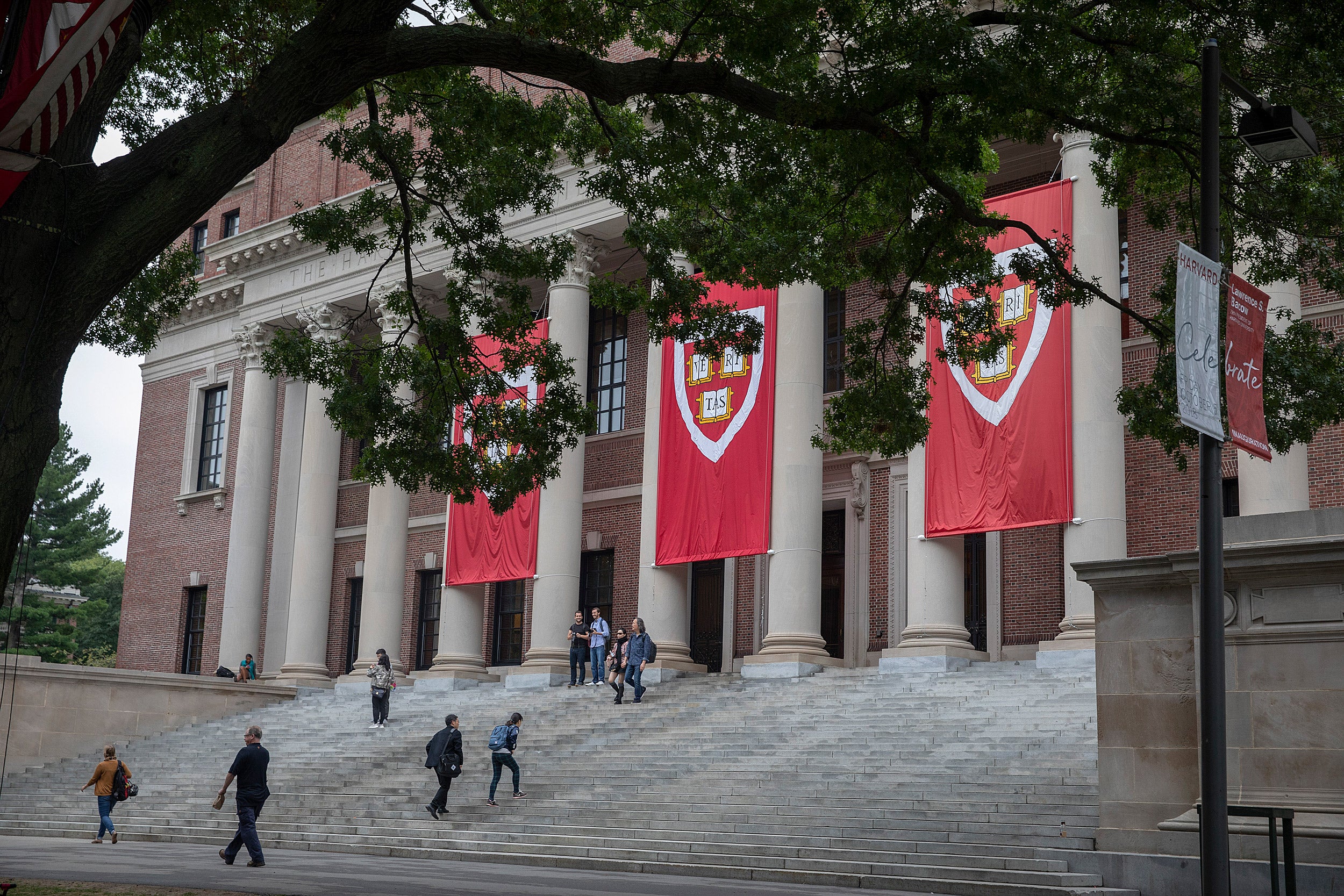
Kris Snibbe/Harvard file photo
935 admitted early to College Class of ’23
Percentage of young women interested in sciences on rise
Under Harvard College’s early action program, Harvard today admitted 935 students from an applicant pool of 6,958 to the Class of 2023.
“The Class of 2023 is off to a promising start,” said William R. Fitzsimmons, dean of admissions and financial aid. “They are exceptionally talented in every way, and they bring with them remarkable diversity of lived experiences and backgrounds to share with their classmates over the next four years.”
This year, women constitute 51.3 percent of those students admitted early, compared with 47.2 percent last year. Women also expressed greater interest in the physical sciences and computer science than last year. Nearly 53 percent of those indicating the physical sciences as their proposed academic concentration are women, compared with 33 percent last year. For computer science, the increase was from 29 to 43 percent. Overall, there was slightly more interest in the social sciences, and relatively small fluctuations in other areas of study.
Julia Losner ’21 of Leverett House, who is concentrating in human developmental and regenerative biology, talked candidly about her love of science and her decision to apply and commit to Harvard. Losner, who became interested in the sciences when she was young, would ask her parents question after question in a quest for “why.” She said science complements her curiosity. “You’re never satisfied with the answers you get because every answer leads to more questions, and you want to dig down to the most molecular level to solve macro problems,” she said.
Harvard offered the well-rounded educational opportunity for Losner to ask these questions.
“When I was choosing what school to go to, I was deciding between a B.A./M.D. program, which gets you a provisional acceptance to medical school from high school, and Harvard for studying human developmental and regenerative biology,” said Losner. “I can decide to go to medical school in the future or pursue research, but I will be a better doctor and better at doing whatever I end up doing because I studied science at Harvard.”
Like many of those just admitted to the Class of 2023, Losner asked herself, “Why Harvard?” Her answer was “the realization that many B.A./M.D. programs make doctors, but Harvard makes people.”
Nearly 53 percent of those indicating the physical sciences as their proposed academic concentration are women, compared with 33 percent last year. For computer science, the increase was from 29 to 43 percent.
The increased focus on physical and computer science comes at an exciting time at Harvard. The Faculty of Arts and Sciences recently announced Samuel C. Moncher Professor of Physics and of Astronomy Christopher W. Stubbs as its new dean of science. Among Stubbs’ top priorities are implementing new courses that meet the College’s revamped pedagogical objectives for the Program in General Education and bringing to fruition two early stage intellectual initiatives, one in quantitative biology and the other in quantum science and engineering.
The University also continues the strategic planning process for space in Cambridge as the Harvard John A. Paulson School of Engineering and Applied Sciences (SEAS) makes the transition to have part of its activities happen in Allston starting in 2020.
In addition to indicating a wide range of academic interests, the Class of 2023 continues to be racially, geographically, and socio-economically diverse. Asian-Americans constitute 26.1 percent of those admitted (compared with 24.2 percent last year), African-Americans 12 percent (13.9 percent last year), Latinx 10.1 percent (9.9 percent last year), and Native Americans and Native Hawaiians 1 percent (2 percent last year).
Notably, the percentage of international citizens rose from 8.2 percent last year to 11.2 percent this year. So far, more than 10 percent of the admitted class are first-generation college students, and 14.5 percent of applicants requested an application fee waiver, compared with 12.9 percent last year, indicating the potential for greater economic diversity in the class.
Harvard’s generous financial aid program — bolstered by the Harvard Financial Aid Initiative, which seeks to increase low- and middle-income students’ awareness of Harvard’s affordability — aims to make the College accessible to any student who is admitted. Approximately 70 percent of students receive some form of aid, and about 60 percent receive need-based scholarships, paying an average of $12,000 per year. Twenty percent of parents pay nothing, and Harvard does not require loans. International students receive the same financial aid as domestic students.
Since the return of early action for the Class of 2016, when 4,228 students applied, there generally have been annual increases in those numbers of students, a pattern seen at many other colleges too. Harvard piloted the elimination of early action out of concern that college admissions had become too complex and pressured for students, and out of particular concern for students at under-resourced high schools. After carefully reviewing trends at Harvard in the years following the elimination of early action, Harvard saw that many highly talented students, including some of the best-prepared low-income and underrepresented minority students, were choosing programs with an early action or early decision option. To ensure that these students had an opportunity to consider Harvard, the College restored the nonbinding early option.
Students were notified of early action decisions via email after 7 p.m. on Dec. 13. Those admitted under early action are not obligated to attend and have until the universal decision date of May 1 to make their final college choices.
The deadline to apply for regular action is Jan. 1. But, in line with longstanding policy, the deadline will be extended for any students and schools affected by natural disasters or other traumatic events.




